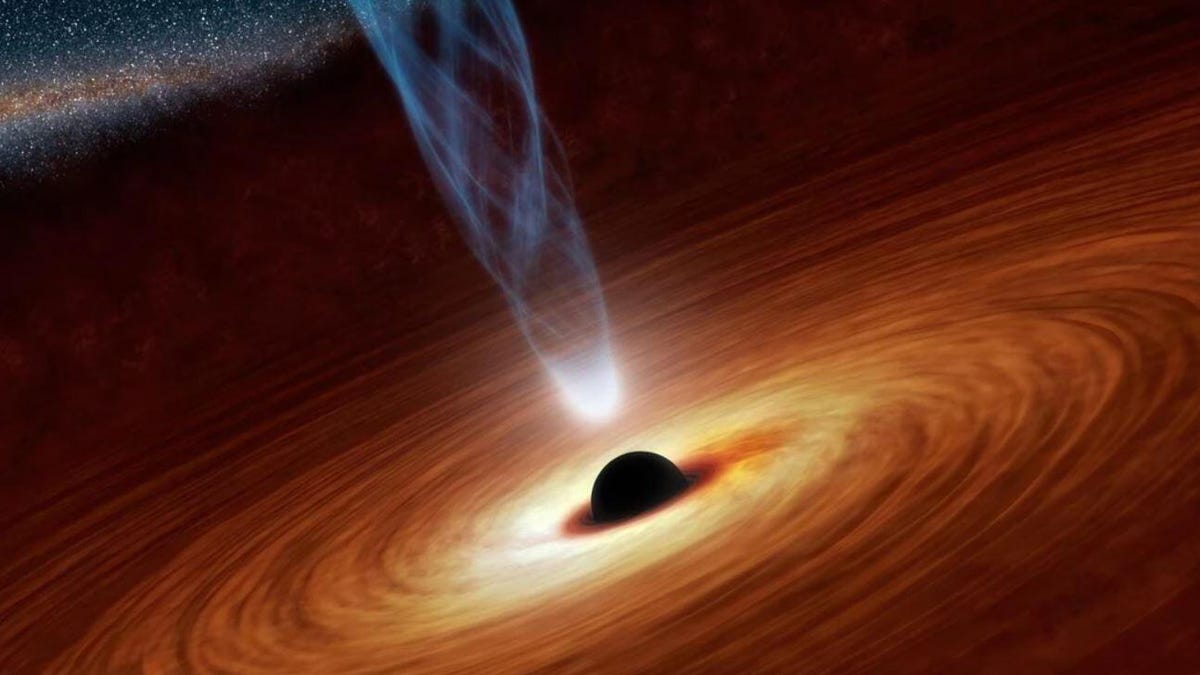Fastest-growing black hole devours about one sun every day
The yawning void known as J2157 eats stars like ours for breakfast. Perhaps every breakfast.

Black holes still provide some of the biggest mysteries - and superlatives - in existence.
The fastest-growing black hole known to humans is astonishingly large, and apparently very, very hangry, according to new research from an international team of astronomers. "The black hole's mass is also about 8,000 times bigger than the black hole in the center of the Milky Way," Christopher Onken of the Australian National University said in a release.
To localize it even further, the yawning void, known as J2157, is 34 billion times the mass of our sun and consumes the equivalent of one sun each day.
"If the Milky Way's black hole wanted to grow that fat, it would have to swallow two-thirds of all the stars in our galaxy," Onken adds.
Onken and his team discovered the black hole in 2018 and were astonished by its fast growth rate.
"How much black holes can swallow depends on how much mass they already have," explained team member Fuyan Bian of the European Southern Observatory (ESO). "So, for this one to be devouring matter at such a high rate, we thought it could become a new record holder. And now we know."
The team used the ESO's Very Large Telescope in Chile to get accurate data on the black hole's mass. Their results appear in Monthly Notices of the Royal Astronomical Society.
Fortunately for us, the behemoth of a black hole is billions of light-years away, which also means the researchers are seeing it when the universe was very young. How a black hole could grow so massive at such an early period in the history of the universe is one of the more intriguing mysteries the team plans to pursue.
"Is this galaxy one of the behemoths of the early universe," Onken asks, "or did the black hole just swallow up an extraordinary amount of its surroundings? We'll have to keep digging to figure that out."

